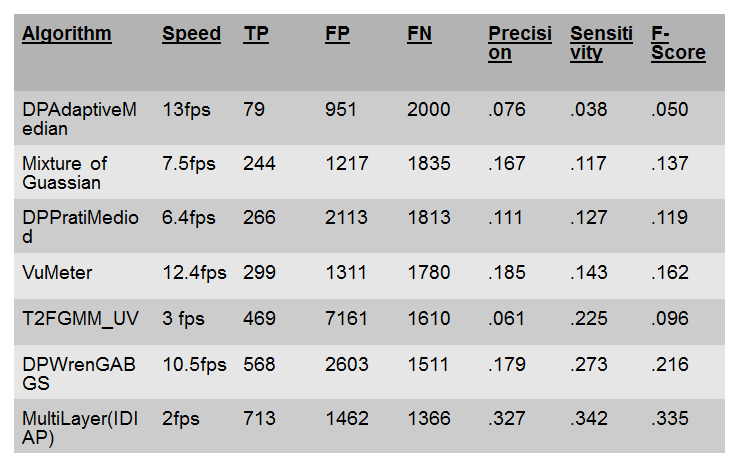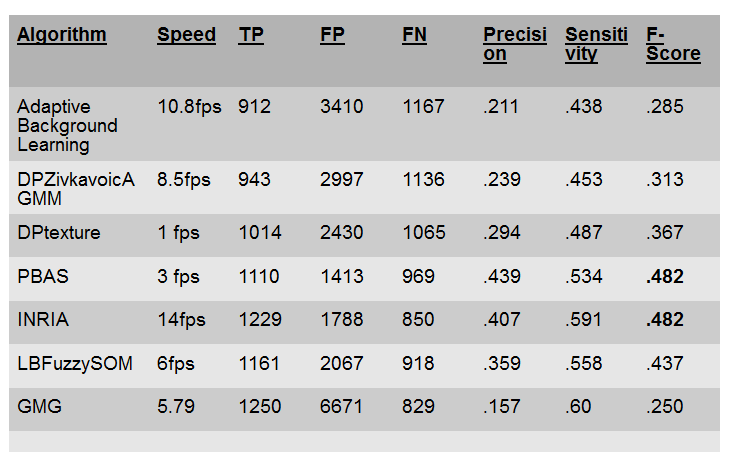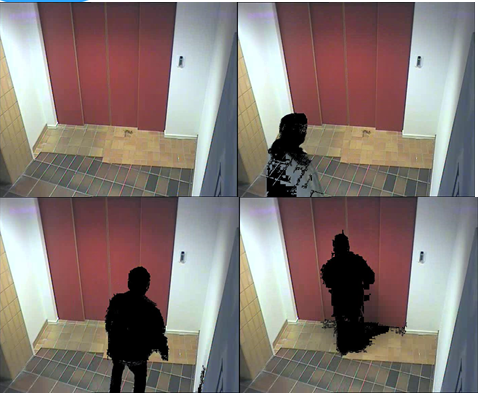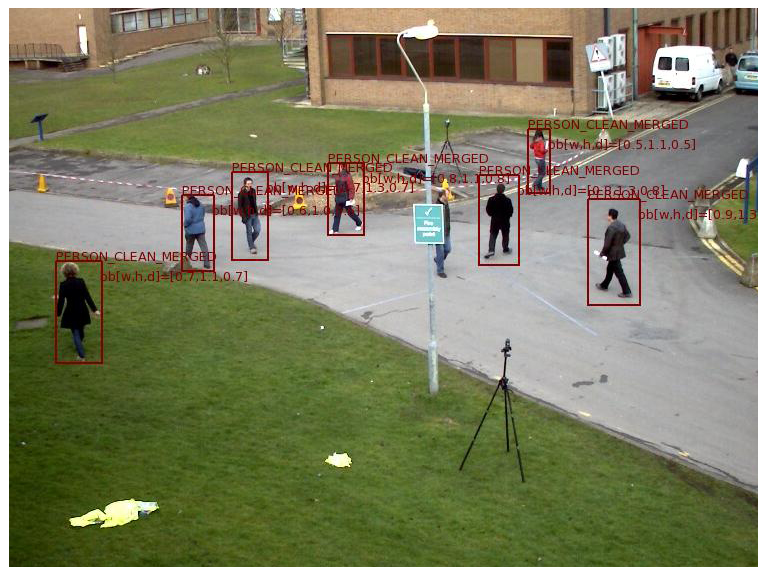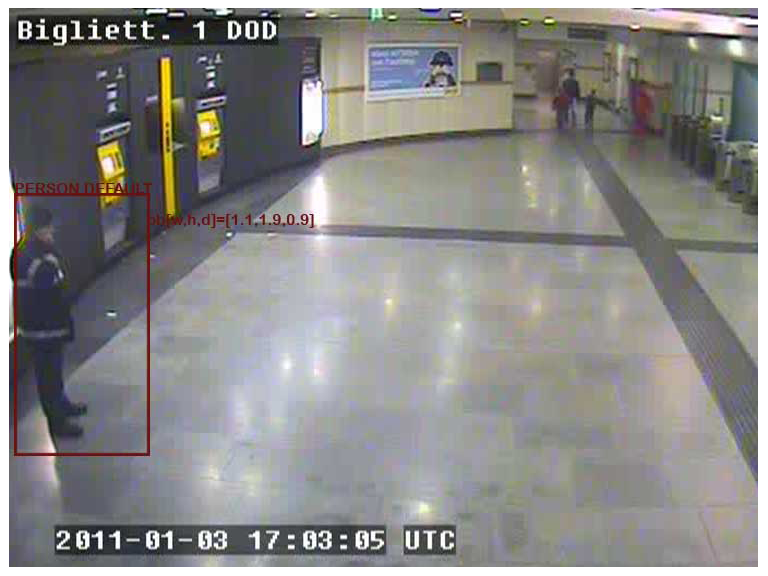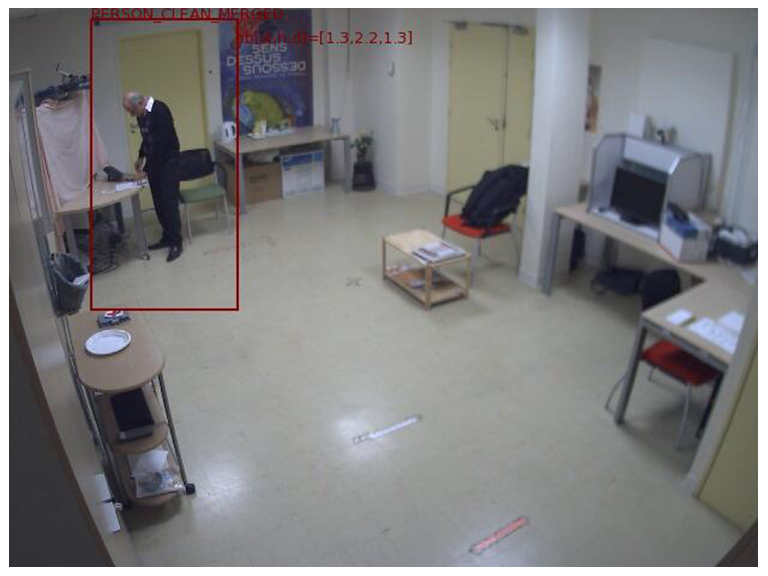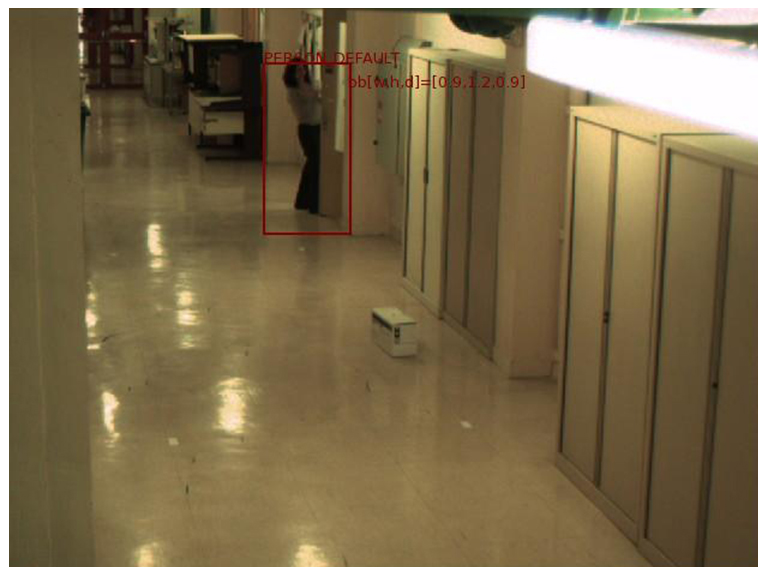Section: New Results
Background Subtraction and People Detection in Videos
Participants : Vasanth Bathrinarayanan, Srinidhi Mukanahallipatna, Silviu Serban, François Brémond.
Keywords: Background Subtraction, People detection, Automatic parameter selection for algorithm
Background Subtraction Background subtraction is a vital real time low-level algorithm, which differentiates foreground and background objects in a video. We have thoroughly evaluated our Extended Gaussian Mixture model containing a shadows-removal algorithm, which performs better than other state of the art methods. Figure 10 shows the comparison of 13 background subtraction algorithms results on a challenging railway station monitoring video dataset from Project CENTAUR, which includes illumination change, shadows, occlusion and moving trains. Our algorithms performs the best in terms of result and with good processing speed too. Figure 11 is an example of our background subtraction algorithm's output on an indoor sequence of a surveillance footage from the Project SUPPORT.
|
Ongoing research include automatic parameter selection for this algorithm based on some learnt context. Since tuning the parameters is a daunting task for a non-experienced person, we try to learn some context information in a video like occlusion, contrast variation, density of foreground, texture etc. and map them to appropriate parameters of segmentation algorithm. Thus designing a controller to automatically adapt parameters of a algorithm as the scene context changes over time.
People Detection
A new robust real-time person detection system was proposed [45] , which aims to serve as solid foundation for developing solutions at an elevated level of reliability. Our belief is that clever handling of input data correlated with efficacious training algorithms are key for obtaining top performance. A comprehensive training method on very large training database and based on random sampling that compiles optimal classifiers with minimal bias and overfit rate is used. Building upon recent advances in multi-scale feature computations, our approach attains state-of-the-art accuracy while running at high frame rate.
Our method combines detection techniques that greatly reduce computational time without compromising accuracy. We use efficient LBP and MCT features which we compute on integral images for optimal retrieval of rectangular region intensity and nominal scaling error. AdaBoost is used to create cascading classifiers with significantly reduced detection time. We further refine detection speed by using the soft cascades approach and by transferring all important computation from the detection stage to the training stage. Figure 12 shows some output samples from various datasets which it was tested on.


